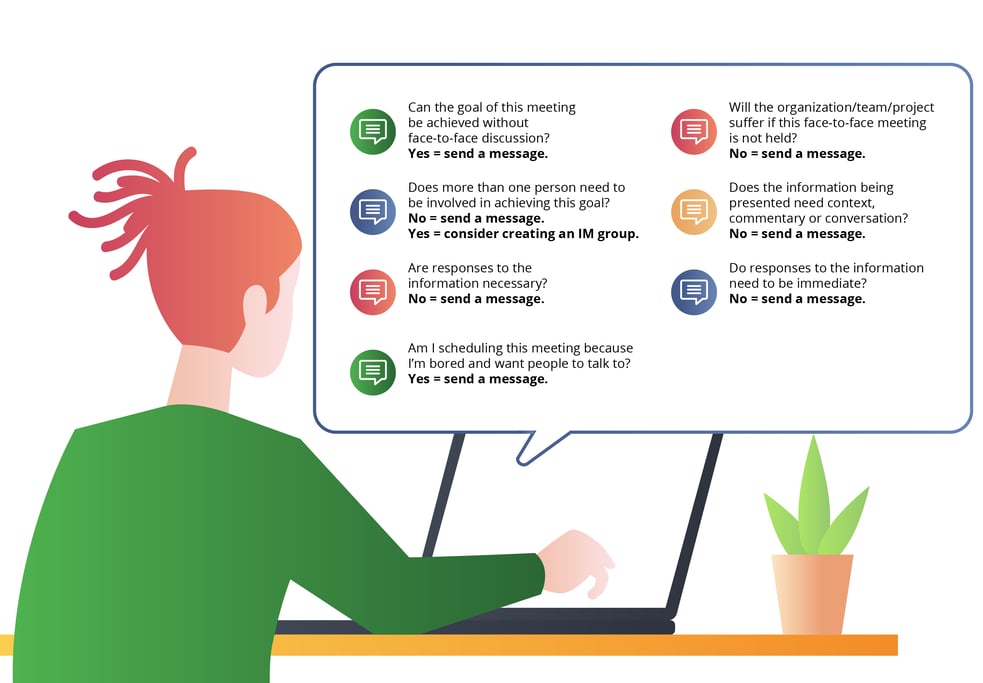Chances are, you’re not a huge fan of unnecessary meetings. Few of us are, but that hasn’t stopped meetings from costing businesses in the USA and the UK an estimated $446 billion annually.
So, why not replace your next boring meeting with instant messaging? When it comes to effective, intuitive communication, there’s one tool that a lot of us (7 billion accounts and rising) use, both at work and at home. Here’s why it will work for you.
Why IM?
On the spectrum of time investment, meetings sit at one extreme and instant messaging sits at the other.
IM allows information to be shared and responded to almost as quickly as an in-person meeting, but it also allows for people to respond in their own time, without interrupting their work schedules and damaging productivity.
IM retains information more reliably than humans do after a few hours in a humid conference room, too. The right software gives users the ability to archive messages and integrates with other applications for a seamless transfer of information. You can then act on the information, instead of spending hours trying to find it. This removes several steps from the process of acting on what’s been shared, and can boost productivity as a result.
Why have a meeting?
As great as IM is (and as unappealing as some meetings are), sometimes face-to-face interactions need to happen. Robert Keidel, writing in the Wharton School’s magazine, has narrowed these situations down as much as possible:
If it’s a:
- ‘Forum’ (a chance for teammates to share perspectives on an issue),
- ‘Decision-making’ meeting,
- Or a ‘team-building’ meeting,
Keidel argues that it’s worth having. Each format depends on real-time, back-and-forth interaction between employees to work, whether that’s to debate a decision or build team relationships.
To meet or to message?
Not sure whether you should herd your colleagues into a meeting room or send a message? Ask yourself these questions to decide whether your meeting falls under one of those three categories mentioned above:

The problem of unnecessary meetings is not a new one. In the March 1976 issue of the Harvard Business Review, Antony Jay wrote a now-famous article entitled ‘How to Run a Meeting’ that opened with the following:
‘Why have a meeting anyway? Why indeed? A great many matters are quite satisfactorily conducted by a single individual who consults nobody. A great many more are resolved by a letter, a memo, a phone call, or a simple conversation between two people.’
With his words in mind, look in your diary at your next round of meetings and ask yourself the questions above. You’ll be surprised how often you can replace a meeting with instant messaging.





